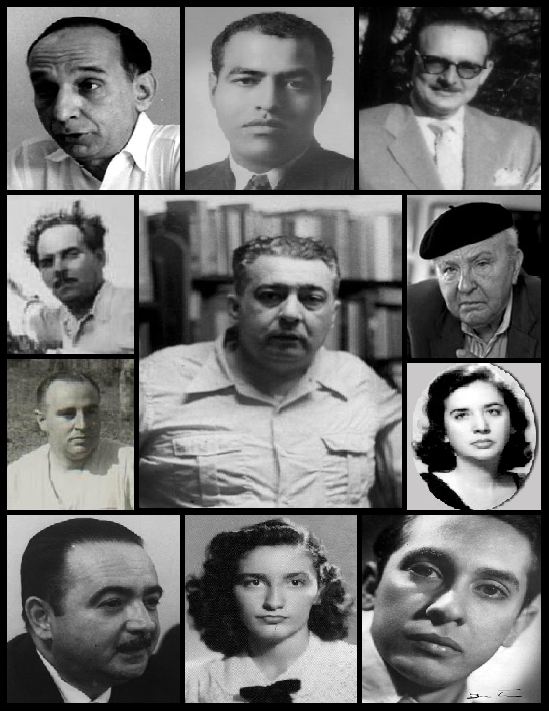4.1.2 The Orígenes Group (1944 – 1956)

“He who returns to his origins will always find new origins.”
Friedrich Nietzsche
The Orígenes group was made up of several Cuban poets and intellectuals who forged bonds of friendship and shared deep-rooted perspectives on culture in general, based on a complete symbiosis with life itself, without false dichotomies; and a perpetual search for the founding roots of Cubanness, beyond the adverse republican situation.
Orígenes’ position was not one of detachment from national reality in the sense of turning his back on specific historical circumstances, but rather the articulation of the cultural universe they postulated allowed them to transcend them and ultimately contribute with their discoveries to the development of society, from an awareness of what is authentically national, the great contributions of Martí and other founding fathers of genuine patriotism, whether in the cultural field or in liberation struggles, as part of an indivisible whole.
In the joint poetics of Orígenes—in which the singularity of the creators did not contradict the need to poetically grasp a traditional tellurism that was common to them—this return to the seeds of the nation can be seen, but also the need to risk a new perspective, interwoven with the past and from which they updated the most valuable aspects of the cultural and vital sedimentations and searches.
The most vibrant core of the Orígenes group was a group of poets whose best pieces Cintio Vitier would collect in his 1948 anthology “Ten Cuban Poets.” They were José Lezama Lima, Angel Gaztelu, Virgilio Piñera, Justo Rodríguez Santos, Gastón Baquero, Eliseo Diego, Cintio Vitier, Octavio Smith, Fina García Marruz, and Lorenzo García Vega. Some scholars also include Cleva Solís within this core group.
But the proposal of Orígenes was not exclusively poetic -not even literary- and in general the group was nourished by and contributed to the dissemination of other artistic and intellectual contributions, so that painters such as Mariano Rodríguez and René Portocarrero, the musicians José Ardévol and Julián Orbón and other intellectuals who contributed something to Origenist philosophy or contributed to the orientation and dissemination of the magazine, such as Agustín Pi, José Rodríguez Feo -he was co-director with Lezama for several years- and the Spanish philosopher María Zambrano, to a certain extent the spiritual mentor of the group, moved within its orbit.
The Orígenes group set itself the essential task of vindicating culture in its sense of art and life, in the face of the trivialization and loss of authentic values as a consequence of the political and social situation and even the American penetration, also in the cultural sphere.
In this regard, Cintio Vitier would affirm: “… we are victims of the most subtly corrupting influence that the Western Hemisphere has ever suffered, and I say this not because I attribute a specific malignancy to it, but because the naive “American way of life” is characteristic of de-substantiating from the roots the values of everything it touches.” In this sense, Orígenes proposed to rescue the insular substance, which oozed since the 19th century; and at the same time to submerge it and emerge it uniquely from the great ecumenical thesaurus.
According to Ivette Fuentes “Orígenes was able to surpass and transcend its time and its immediate proposals, to insert itself in its own right into the history of Cuban culture, because its work and its existence and, even more, its emergence, were not based on preconceived or agreed criteria in favor of a factual action, but were sustained in the very simple and basic support of friendship, ties of spiritual empathy that fostered the organic nature and honesty of its projection in national life, a true connection that seals the actions and thoughts of man for life.”








